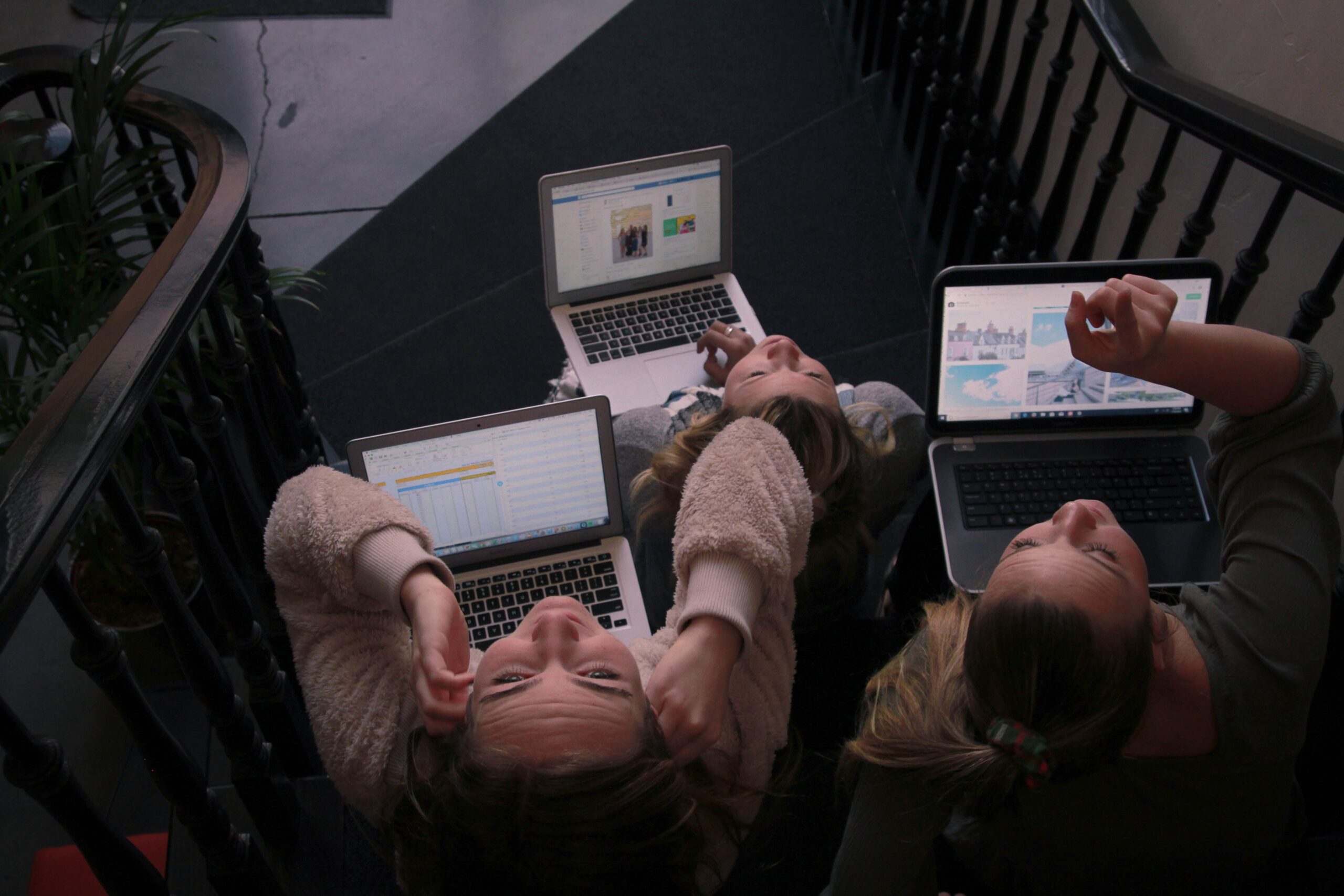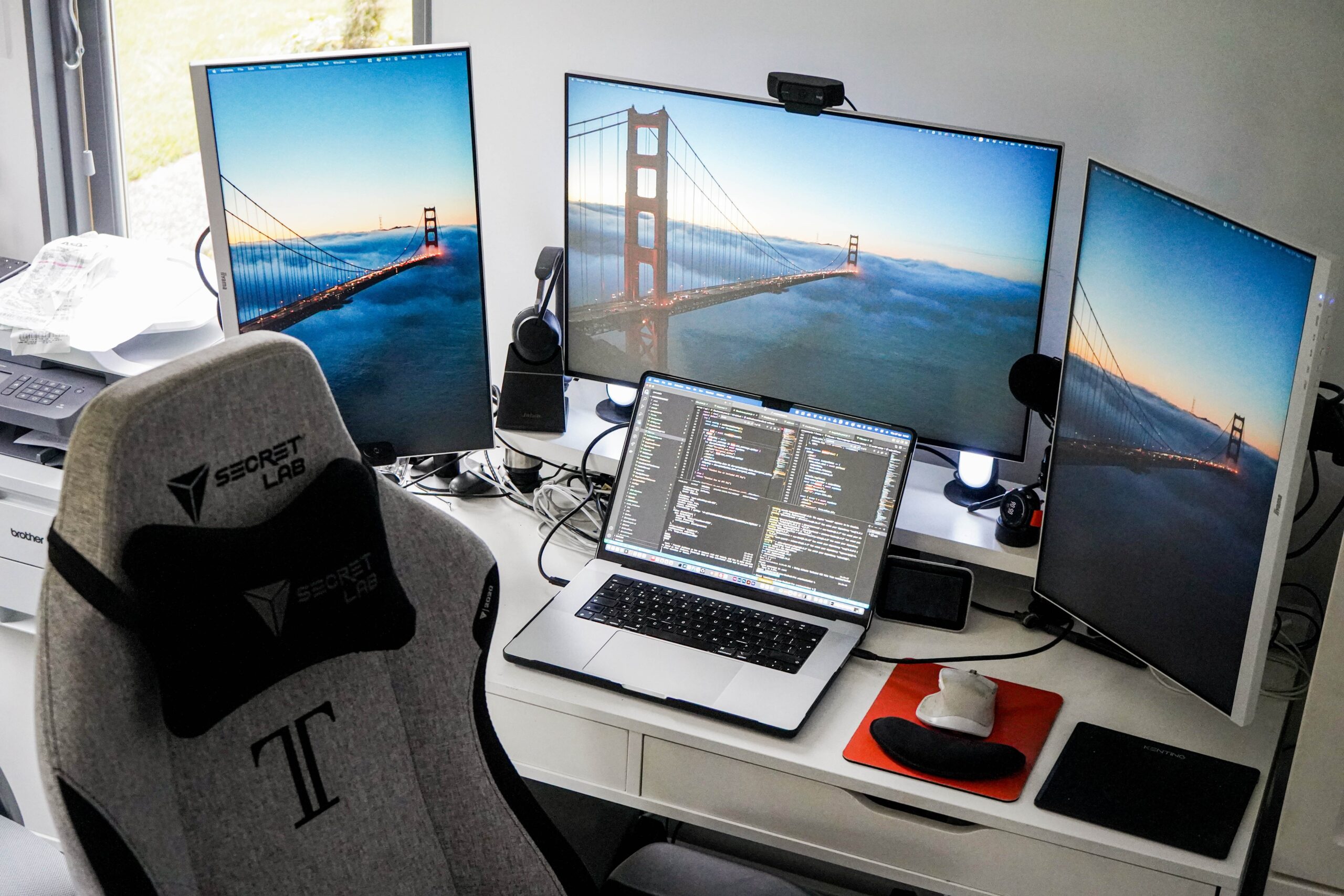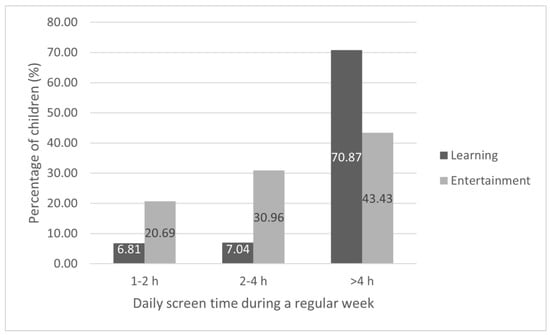Understanding the benefits of screen breaks is essential. We now live in a digital world where screens have become an omnipresent part of children's and teenagers' daily lives. However, their excessive use can be detrimental to their physical and psychological well-being. This article looks at the importance of screen breaks for young people. It also highlights their role in healthy, balanced development.
What are the benefits of screen breaks for young people?
Positive impact on mental health
Studies show that reducing screen time can improve young people's mental well-being. For example, a study by Tandon et al (2021) REF [^1^] found that children who limited their screen time had better mental health outcomes.
Influence on physical health
Screen time is often associated with reduced physical activity. According to Sampasa-Kanyinga et al. (2020) REF [^2], following physical activity and screen time recommendations is linked to better mental health in children and adolescents.
Recommendations for moderate screen use
It's advisable to limit screen time to 2 hours a day for leisure, encouraging physical and social activities away from the screen.
Working on digital health
It's essential to make young people aware of the importance of balanced digital health. This means understanding the effects of screens on well-being, and learning to use technology responsibly and consciously.
Encourage regular breaks
Regular breaks help prevent eyestrain, sedentary lifestyles and social isolation. Encouraging active screen breaks, such as physical activities or face-to-face interaction, can help counterbalance the negative effects of prolonged screen use.
Overexposure to screens: the effects on the physical health of children and adolescents
Psychological impact
Excessive screen use can lead to sleep disorders, anxiety and reduced attention span.
Adverse effects on physical health
Studies show a direct link between excessive screen time and various health problems, such as obesity, sleep disorders and emotional imbalance.
Screen-related anxiety
Prolonged exposure to screens can increase anxiety levels in young people, as shown in the study by Donthu et al. (2022) REF [^3^].
The influence of screens on social interaction
Screens can reduce the time devoted to face-to-face social interaction. Yet these are essential to the development of social and emotional skills in children and teenagers. This can lead to feelings of isolation and affect the ability to establish healthy relationships.
Negative effects of social media
Intensive use of social media can have an impact on young people's self-esteem and psychological well-being. Constant comparison with others and exposure to negative content can contribute to anxiety and depression in adolescents.
Why is it important for school-age children and teenagers to take screen breaks?
Encouraging healthy screen use among young people
Educating young people about the balanced use of screens is essential for healthy development. This involves understanding the benefits and risks associated with screen use, and developing healthy habits.
The importance of breaks for physical activity
Screen breaks encourage children and teenagers to take part in physical activities, which are essential to their physical and mental development.
Screens and the recommended hour per day
Experts recommend limiting screen time to a maximum of 2 hours a day for leisure activities. This recommendation aims to balance screen time with other essential developmental activities.
Here are the recommendations for screen exposure according to the age of children and teenagers:
- Before 3 years Avoiding exposure to screens is strongly advised.
- 3 to 6 years Very limited exposure, mainly for educational activities, is acceptable. However, it is preferable to minimize screen use.
- 6 to 9 years Limit screen time to one hour a day, under parental supervision, with a focus on educational content.
- 9 to 12 years The use of educational screens, preferably without Internet access, while maintaining a balance with other activities. Parental supervision remains important.
- 12 to 16 years Authorize limited access to the Internet, always under parental control, with a focus on educational and informative uses.
- 16 to 18 years To offer greater freedom of access to the Internet, with use focused on education and information, without the need for constant adult supervision.
Recommendations for screen usage limits
It's advisable to establish clear rules on screen use, taking into account the age and individual needs of each child or teenager. This can include fixed times for screen use and screen-free zones in the home.
What are effective strategies for encouraging more screen breaks?
Alternative screen-free activities
Offering activities such as sports, reading or art during screen breaks helps reduce screen time. These activities also contribute to young people's physical, cognitive and creative development.
Encouraging off-screen social interaction
Organizing group activities or family games can help limit screen time. These face-to-face social interactions are crucial to the emotional and social development of children and teenagers.
Building a routine that includes screen breaks
Incorporating screen breaks into daily routines can help establish healthy habits. This can include dedicated screen-free times, such as during meals or before bedtime.
Integrating screen breaks into family activities
Including screen breaks in family activities reinforces the importance of spending time together without digital distraction. This can include outdoor activities, board games, or simply family conversations.
Education on the balanced use of screens
Informing children and teenagers about the effects of excessive screen use for video games, for example, and encouraging them to self-assess their screen time can help them make informed decisions about their screen use. They also need to be made aware of the importance of taking screen breaks.
Creating an environment conducive to screen breaks
Creating spaces in the home where screen use is limited can encourage young people to engage in other activities. This can include areas dedicated to reading, playing or relaxing.
Overcoming resistance to screen breaks
Understanding and addressing the reasons why children and teenagers might resist screen breaks is essential. This can involve discussing the benefits of off-screen activities and setting up screen rules negotiated as a family.
What are the recommendations for managing screen use among school-age children and teenagers?
Estimated screen time
It's important to monitor and limit daily screen time. Using tracking apps or setting fixed times for screen use can help to become aware of the amount of time spent in front of screens and effectively reduce it.
Creating an age-appropriate break plan
For younger children, this may involve frequent screen breaks with fun activities, while for teenagers, it may include activities that encourage independence and social interaction. This plan should be flexible and evolve with the child's age and interests.
Encouraging creative alternatives to screens
Offering creative and engaging activities as an alternative to screen time can be very beneficial. This can include artistic hobbies, craft projects, or outdoor activities that stimulate the imagination and encourage physical activity.
Less screen means more movement and creativity
Reducing screen time can free up time for activities that encourage movement and creativity. These are essential to the development of children and teenagers.
Why exercise?
Physical activities play an important role in the physical and mental development of young people. They improve physical fitness, reduce the risk of chronic disease and promote mental well-being. Regular exercise also helps improve concentration and performance at school.
The place of creativity in children's development
Creativity plays an important role in children's cognitive and emotional development. Creative activities such as drawing, music or writing stimulate the imagination, encourage self-expression and develop problem-solving skills.
The positive impact of physical and creative activities
Engaging children in physical and creative activities has multiple benefits. These include building self-confidence, improving social skills and reducing stress. These activities offer a healthy alternative to screen time and contribute to a balanced lifestyle.
In conclusion,
Screen breaks are essential for the healthy development and well-being of children and teenagers. They contribute to better physical and mental health, and encourage a more active and creative lifestyle. When parents integrate off-screen activities into their little ones' daily lives, they help them develop a healthy balance between time spent in front of the TV, tablets, computers and other enriching activities.
Disclaimer
This article is for information purposes only and does not replace professional medical advice.
References
REF [^1^]. Tandon, P. et al. (2021). Association of Children's Physical Activity and Screen Time With Mental Health During the COVID-19 Pandemic.
REF [^2^]. Sampasa-Kanyinga, H. et al. (2020). Combinations of physical activity, sedentary time, and sleep duration and their associations with depressive symptoms and other mental health problems in children and adolescents: a systematic review.
REF [^3^]. Donthu, R. et al. (2022). Association of Screen Time with Physical and Mental Health Among Children: A Cross-Sectional Study.










